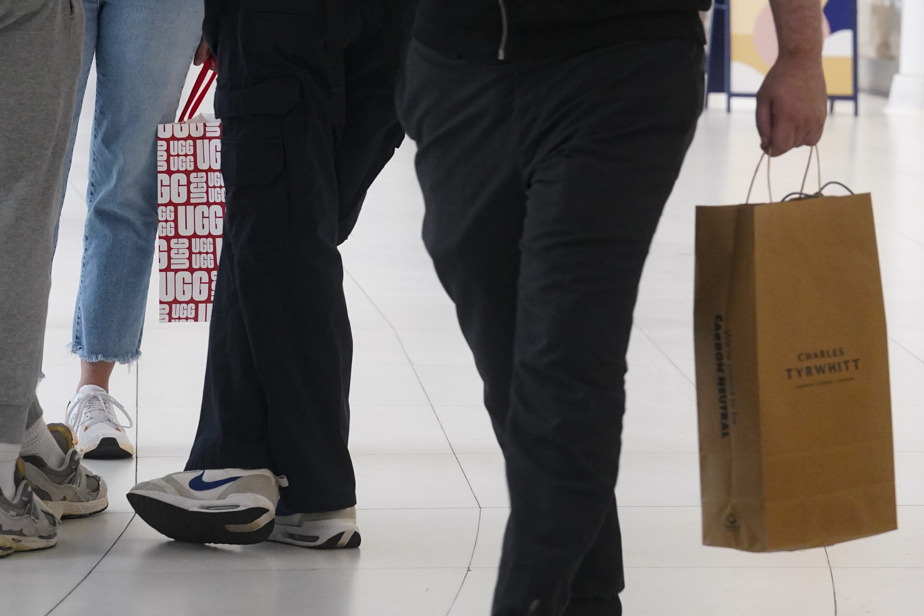(Washington) Inflation and household spending marked time again in May, leading the markets to hope for a less aggressive monetary trajectory than announced by the members of the American central bank, the Fed.
Published Friday by the Commerce Department, the PCE index, favored by the Federal Reserve (Fed) in its decisions, marked time again in May, after an unexpected increase in April, to stand at 3.8% over one year, against 4.3% a month earlier.
Better still, over one month inflation fell to just 0.1%, in line with analysts’ expectations, according to the consensus of Briefing.com, a figure much lower than in April, again (+0.3% ).
On Twitter, the White House welcomed this new data, “new evidence”, according to it, of the positive effect of “Bidenomics”, a nickname given to the economic reforms launched by President Joe Biden.
“Growth yesterday was above expectations, wages are rising and now the PCE index shows progress in tackling inflation, although there is still work to be done,” the executive commented.
A trend also welcomed by the markets, reassured by these data: at 11 a.m. (Eastern time), all the major indices were up on Wall Street, the Dow Jones appreciating by 0.61% and the NASDAQ by 1.42%.
Beyond inflation, household spending also marked time, up slightly by 0.1% over one month compared to 0.6% in April, despite a rise in income which remains solid (+0 .4% against +0.3% in April).
“May’s income and expenditure data seem to confirm that consumption growth slowed sharply in the second quarter and provide encouraging signs that underlying inflation is gradually easing. This provides support for Fed doves,” commented Andrew Hunter of Capital Economics.
Two rate hikes still expected
Data revised by the Commerce Department showed growth of 2% in the first quarter on an annual basis on Thursday, well above initial estimates (+1.3%), driven precisely by consumption and exports.
An equally positive point is that inflation is less and less anchored in consumer expectations: according to the University of Michigan, consumers are now expecting it at 3.3% at the end of the year, whereas they were considering up to now rather at 4.2%.
If the slowdown in both consumption and inflation is confirmed, will this nevertheless be enough to encourage the Fed to continue the pause begun at the last meeting in mid-June and not announce a new interest rate hike at the end of July?
Not certain, according to the opinion of Kathy Bostjancic, chief economist of Nationwide, who believes, on the contrary, that “the persistence of inflation and the resilience of consumption should keep the Fed in the idea of a new increase in July after his June break”.
Especially since core inflation, which excludes food and energy prices and which is monitored more closely by the Fed, remains strong, at 4.6% over one year, with a less marked drop than the general index.
Another measure of inflation exists, the CPI index, which is used in particular to calculate pensions. For May, it had also slowed, dropping to 4% year on year and slowing month on month to 0.1%.
To combat inflation, the Fed has tightened its monetary policy significantly since March 2022, with ten consecutive increases for a total of five percentage points, now bringing its key rate to a range between 5% and 5.25%.
On Wednesday, Fed Chairman Jerome Powell indicated that at least two rate hikes were still to come, possibly back-to-back, but that the Federal Reserve would determine its next hikes based on developments in macroeconomic data.
More so, he had estimated that inflation in the United States would not reach its target of 2% per year before, potentially, 2025.
The next Fed meeting is scheduled for July 25-26.
